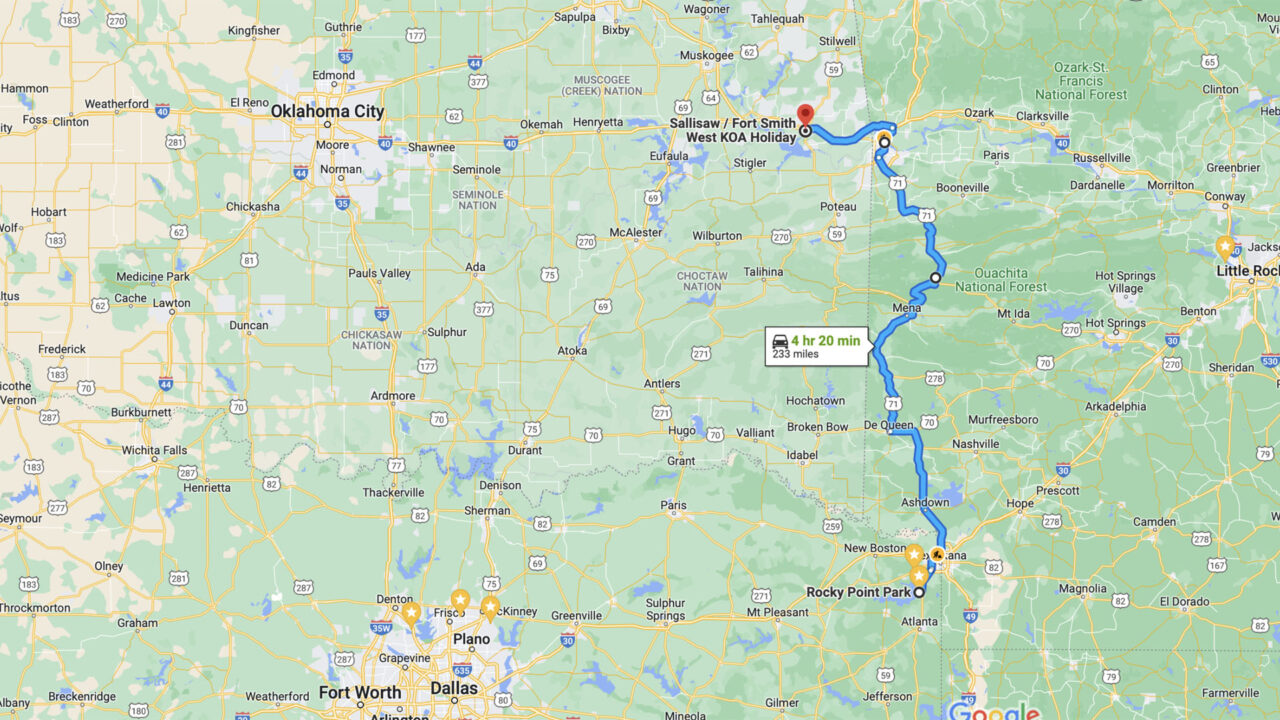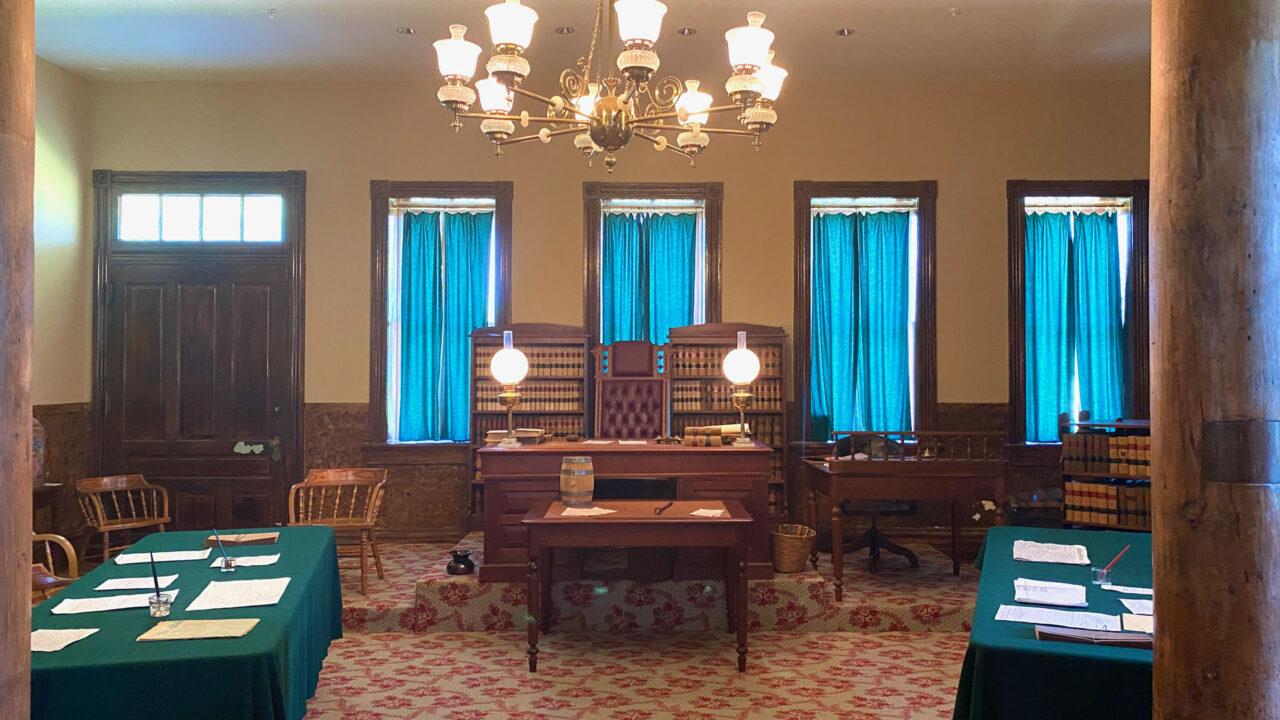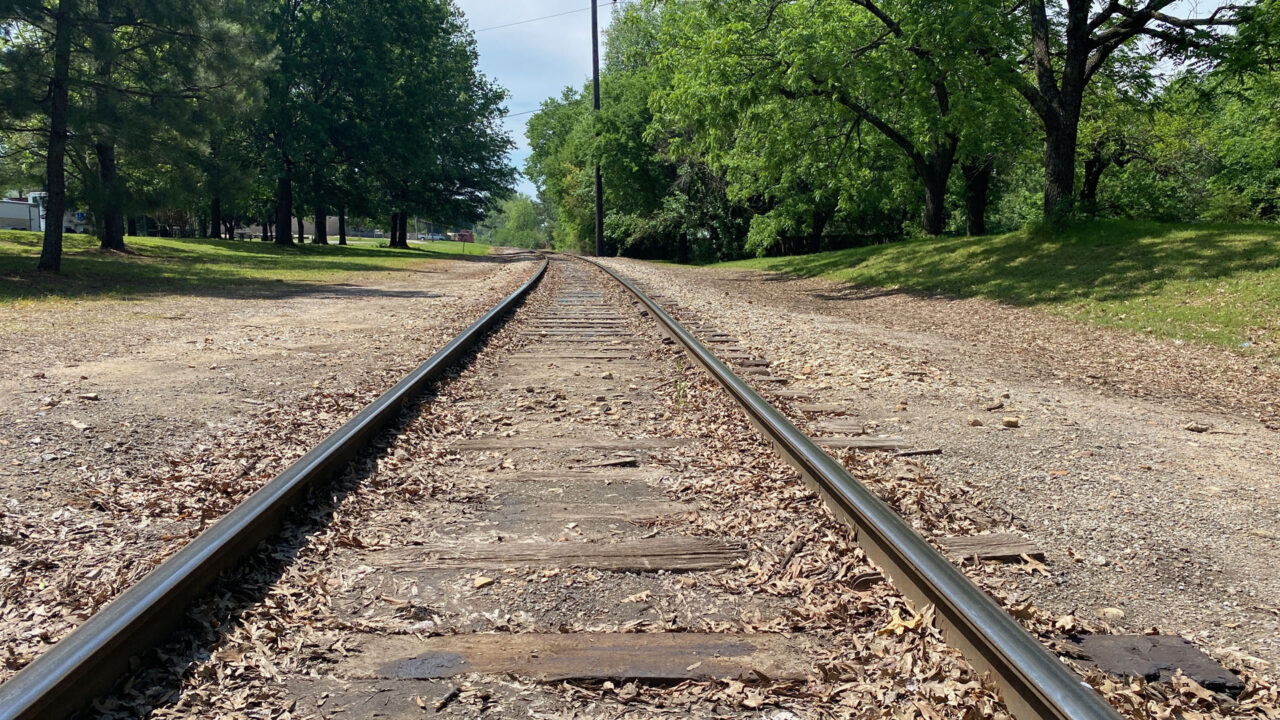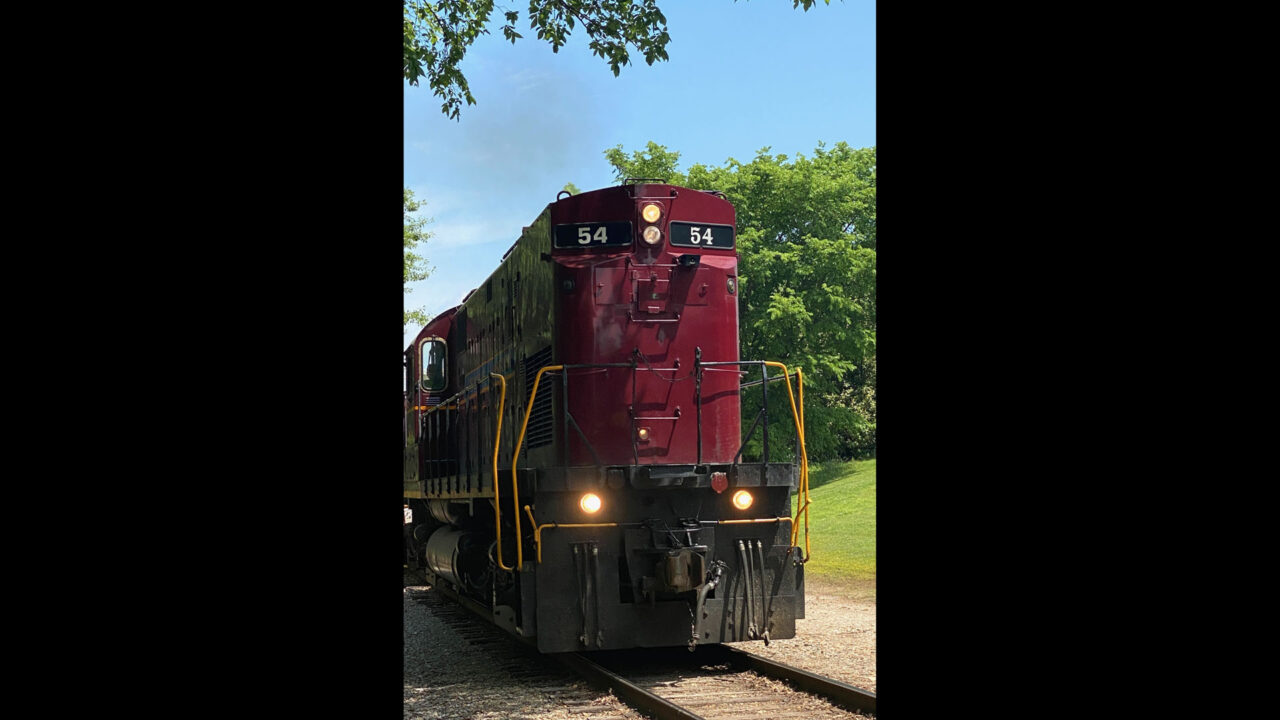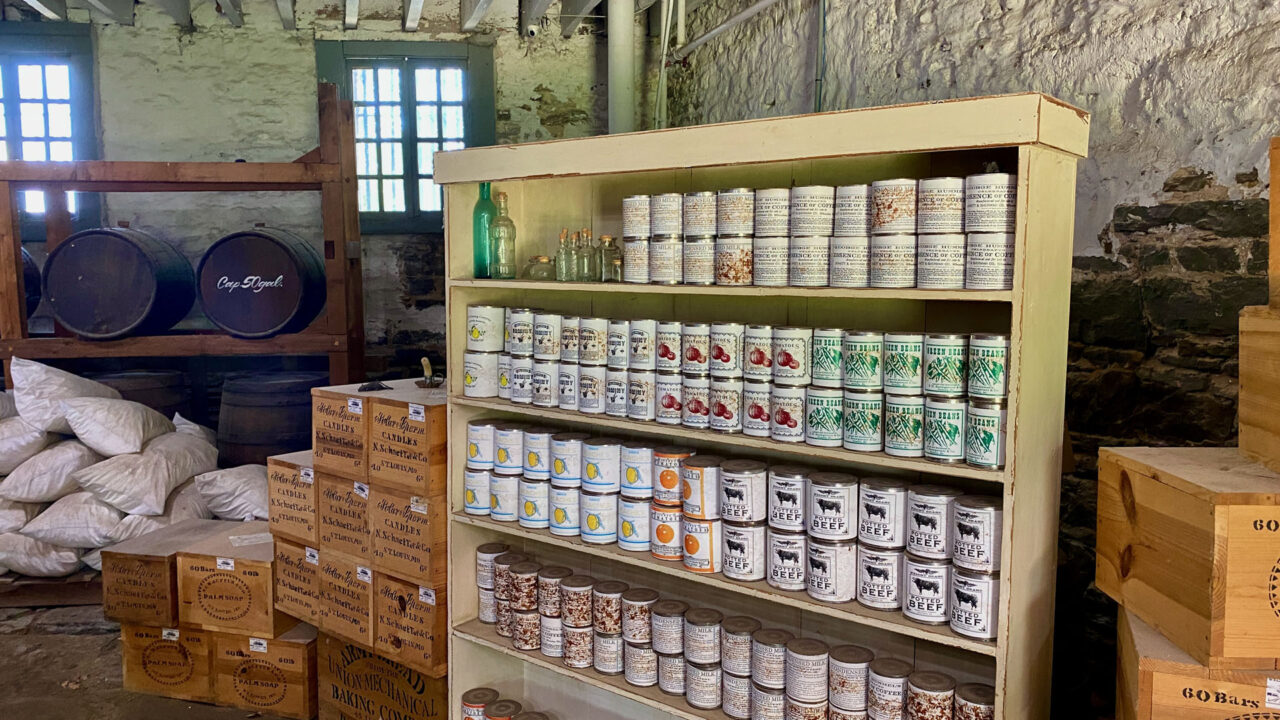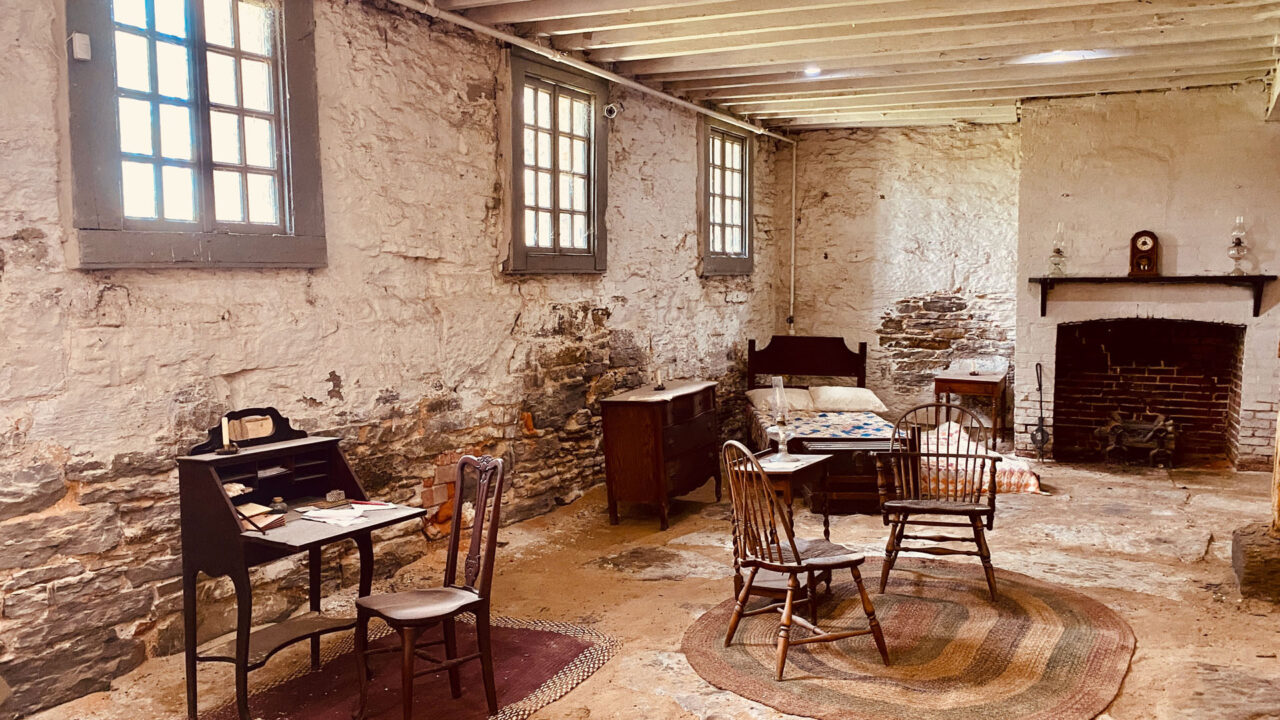SAT., MAY 6 thru MON., MAY 8, 2023
It was a very pretty ride traveling 233 miles north from Texarkana, TX to Sallisaw/Fort Smith, Oklahoma. Very green and lush!
We spent three nights in Sallisaw at the KOA which is just outside Fort Smith, Oklahoma. We did some chores, some relaxing, and played some card games with the Hannafords. Then on Monday, May 8 (2023), the pod visited Fort Smith National Historic Site. It sits on the Arkansas River and was in use for almost 60 years. They had a great Visitor’s Center with a short film about the fort and interesting displays.
The First Fort Smith was built in 1817 to keep peace in the Arkansas River Valley between the native Osage and newly arriving Cherokee. But by 1824 the frontier had pushed west and Fort Smith was abandoned. Built of logs and stone, over time the logs rotted and the fort fell into ruin.
The Second Fort Smith (1838-1871) was built with a massive 12 ft. high and 2 ft. thick wall surrounding the fort. The wall is now gone but is represented with a mark in the ground. Fort Smith represents the last of a dying breed: from the 1840s on, virtually all frontier forts were built without walls. After Fort Smith was built, the cost of constructing a wall was considered too great in comparison to the benefit of a fortified defense.
The Second Fort Smith was initially used to keep peace between various Indians being relocated to the area. This forcible removal and relocation of various tribes is known as the “Trail of Tears” as thousands died during this relocation period. A sad time in our nation’s history. The fort was then used during the US-Mexican War (1846-48), the 1849 California Gold Rush, and then as an important supply depot during westward migration. After the Civil War, the military permanently closed the little-needed fort in 1871.
The fort got a final use as the Federal Court for the Western District of Arkansas (1872-96). Over the next 24 years, hundreds of US Deputy Marshals rode out from the court into Indian Territory to maintain law and order. The basement became a primitive jail with two big cells (up to 50 men per cell) and poor unsanitary conditions. A female journalist eventually wrote about the deplorable conditions and a new jail was built. Judge Parker was the judge at the time. Nicknamed the “hanging judge,” he rehabilitated convicts, reformed criminal justice, and advocated the rights of Indian nations, but sensational cases and mass executions over-shadowed such work. Judge Parker presided over one of the largest, deadliest, and busiest federal court districts. He heard over 13,000 cases during his time, 344 were for capital crimes. Of 160 he sentenced to hang, 86 eventually faced the gallows. We could even see a spot in the yard where the gallows was set up (a reproduction). One time 6 were hanged at once. Eeeek.
We all enjoyed our visit to Fort Smith. It helps that we all enjoy learning about our nation’s history.
The town of Fort Smith looked charming, but we ran out of time for exploring that. Too hot to do further exploring!
Next we move on to Carthage, Missouri.

